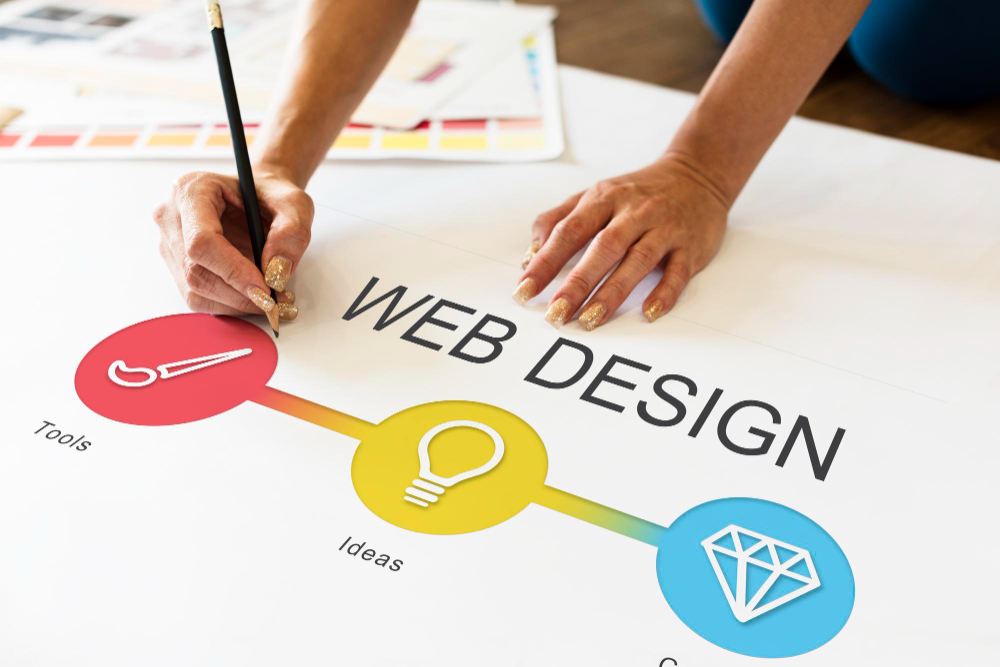
Top 5 Social Media Strategies That Actually Drive Sales
August 28, 2025
Digibarq Labs Recognized by Leading B2B Marketplaces
September 7, 2025Introduction
A beautiful website is nice to have. But let’s be real — if it doesn’t convert visitors into customers, it’s just digital decoration. In 2025, web design is about more than colors and layouts; it’s about user experience, speed, and psychology.
Your website is the first interaction most people have with your brand. Research shows it takes only 0.05 seconds for a visitor to form an opinion about your site. That means design directly affects whether someone clicks “Buy Now” or closes the tab.
So, what design trends in 2025 actually make websites convert? Let’s break it down.
1. Minimalism with Bold Typography ✍️
Less clutter = more focus. Minimalism has dominated design for years, but in 2025 it’s paired with bold, statement typography.
-
Why it works: Visitors don’t have to search for information. Clear headlines guide them instantly.
-
Conversion impact: Simple layouts reduce distraction, keeping the focus on CTAs (like “Sign Up” or “Shop Now”).
Pro Tip: Use one or two primary colors and strong typography to highlight your brand message.
2. Dark Mode as Default 🌙
Dark mode isn’t just a trend anymore — it’s a standard. From smartphones to social media, users love the sleek look and reduced eye strain.
-
Why it works: Dark interfaces feel modern and immersive.
-
Conversion impact: Users stay longer on sites that feel comfortable to browse. Longer sessions = higher chance of conversion.
Example: Tech brands like Apple and Tesla use dark themes to highlight visuals and create a premium vibe.
3. Micro-Animations for Engagement 🎥
Micro-animations are subtle design effects (like a button glowing when hovered or an icon bouncing slightly). They guide users through the site without overwhelming them.
-
Why it works: Movement grabs attention and makes interactions satisfying.
-
Conversion impact: Buttons with hover animations increase click rates because they feel “alive.”
Pro Tip: Use animations for feedback — e.g., showing a checkmark when a form is submitted.
4. AI-Driven Personalization 🤖
In 2025, personalization is everything. Websites powered by AI adapt to each visitor’s behavior.
-
Why it works: No two visitors are the same. Personalized experiences boost relevance.
-
Conversion impact: Showing products based on browsing history increases purchase likelihood by up to 80%.
Example: Ecommerce sites recommend “You may also like” products that align with what a customer viewed earlier.
5. Ultra-Fast Performance ⚡
No design trend can save a slow site. Speed is still king. A 1-second delay can drop conversions by 7%.
-
Why it works: Users don’t wait around. Google also ranks faster sites higher.
-
Conversion impact: Fast-loading websites reduce bounce rates and maximize conversions.
Pro Tip: Optimize images, use a lightweight framework, and leverage caching/CDN.
6. Mobile-First & Thumb-Friendly Design 📱
With 70%+ of global traffic coming from mobile, websites must be designed for thumbs, not cursors.
-
Why it works: Easy navigation = better user experience.
-
Conversion impact: If buttons are too small or menus hidden, visitors drop off quickly.
Pro Tip: Design CTAs large enough for thumb taps. Keep forms short for quick checkout.
7. Storytelling Through Visuals 📸
People don’t just buy products — they buy stories. Websites in 2025 integrate visual storytelling through images, videos, and brand narratives.
-
Why it works: Stories build emotional connection.
-
Conversion impact: Emotional connection = higher trust = more purchases.
Example: A travel website showing short videos of destinations makes users imagine themselves there, nudging them to book.
Case Study: A SaaS Startup Boosting Signups
A SaaS company redesigned its website in 2025 using bold typography, micro-animations, and faster performance. Before redesign:
-
Average bounce rate: 65%
-
Monthly signups: 200
After redesign:
-
Bounce rate dropped to 38%
-
Signups jumped to 500/month
Result? A 150% increase in conversions just by improving web design.
Future of Web Design Beyond 2025
-
Voice-Activated Interfaces: Users navigating websites with voice commands.
-
AR/VR Experiences: Allowing users to “experience” products virtually.
-
Sustainability in Design: Eco-friendly hosting and minimal energy use.
-
No-Code & AI Builders: Businesses designing conversion-focused websites without developers.
Conclusion
In 2025, web design isn’t just about looking pretty — it’s about driving results. The trends shaping conversions this year include:
-
Minimalism with bold typography.
-
Dark mode for sleek comfort.
-
Micro-animations that engage.
-
AI-powered personalization.
-
Lightning-fast speed.
-
Mobile-first, thumb-friendly layouts.
-
Visual storytelling that sells.
If your website isn’t converting visitors into customers, it’s time to rethink your design. Remember: your website is not just a portfolio, it’s your best salesperson — 24/7.

